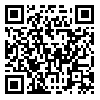Volume 30, Issue 11 (2-2023)
JSSU 2023, 30(11): 6097-6106 |
Back to browse issues page
Download citation:
BibTeX | RIS | EndNote | Medlars | ProCite | Reference Manager | RefWorks
Send citation to:



BibTeX | RIS | EndNote | Medlars | ProCite | Reference Manager | RefWorks
Send citation to:
Davari A, Khabbazian A, Baghestani S A. Evaluation of Demographic Characteristics and Decayed, Missing, and Filled Teeth Index in Adults Referred to Yazd Dental School in 2021. JSSU 2023; 30 (11) :6097-6106
URL: http://jssu.ssu.ac.ir/article-1-5800-en.html
URL: http://jssu.ssu.ac.ir/article-1-5800-en.html
Abstract: (1485 Views)
Introduction: Oral health assessment plays an important role in determining the health status and health planning of communities. The most important indicator that indicates the oral health status of individuals is the Decayed, Missing, and Filled Teeth (DMFT) index. The present study was conducted to investigate the demographic characteristics and DMFT Index in adults referred to Yazd Dental School in Yazd, Iran in 2021.
Methods: In this descriptive cross-sectional study, 500 adult patients in the age group of 18 to 65 years were studied. 343 (68.6%) of the samples were female and 157 (31.4%) were male. The patients completed a questionnaire, including their demographic characteristics and socio-economic status. DMFT index was also recorded in the study questionnaire. Data were analyzed by SPSS17 statistical software and Mann-Whitney, Kruskal-Wallis and Tukey statistical tests.
Results: The mean total DMFT index was 9.7± 5.1. There was a statistically significant difference in the mean DMFT index by age (P = 0.017), level of education (P = 0.000), occupation (P = 0.001) and number of family members ( P= 0.007), however, no statistically significant difference was observed in the mean DMFT index according to gender, place of residence, and monthly income of participants (P <0.05).
Conclusion: The mean DMFT index is influenced by demographic characteristics. Older age, more family members, higher education level and better position jobs had the greatest impact on the mean DMFT index.
Methods: In this descriptive cross-sectional study, 500 adult patients in the age group of 18 to 65 years were studied. 343 (68.6%) of the samples were female and 157 (31.4%) were male. The patients completed a questionnaire, including their demographic characteristics and socio-economic status. DMFT index was also recorded in the study questionnaire. Data were analyzed by SPSS17 statistical software and Mann-Whitney, Kruskal-Wallis and Tukey statistical tests.
Results: The mean total DMFT index was 9.7± 5.1. There was a statistically significant difference in the mean DMFT index by age (P = 0.017), level of education (P = 0.000), occupation (P = 0.001) and number of family members ( P= 0.007), however, no statistically significant difference was observed in the mean DMFT index according to gender, place of residence, and monthly income of participants (P <0.05).
Conclusion: The mean DMFT index is influenced by demographic characteristics. Older age, more family members, higher education level and better position jobs had the greatest impact on the mean DMFT index.
Type of Study: Original article |
Subject:
Dental
Received: 2022/07/21 | Accepted: 2022/11/14 | Published: 2023/02/4
Received: 2022/07/21 | Accepted: 2022/11/14 | Published: 2023/02/4
Send email to the article author
| Rights and permissions | |
 |
This work is licensed under a Creative Commons Attribution-NonCommercial 4.0 International License. |







